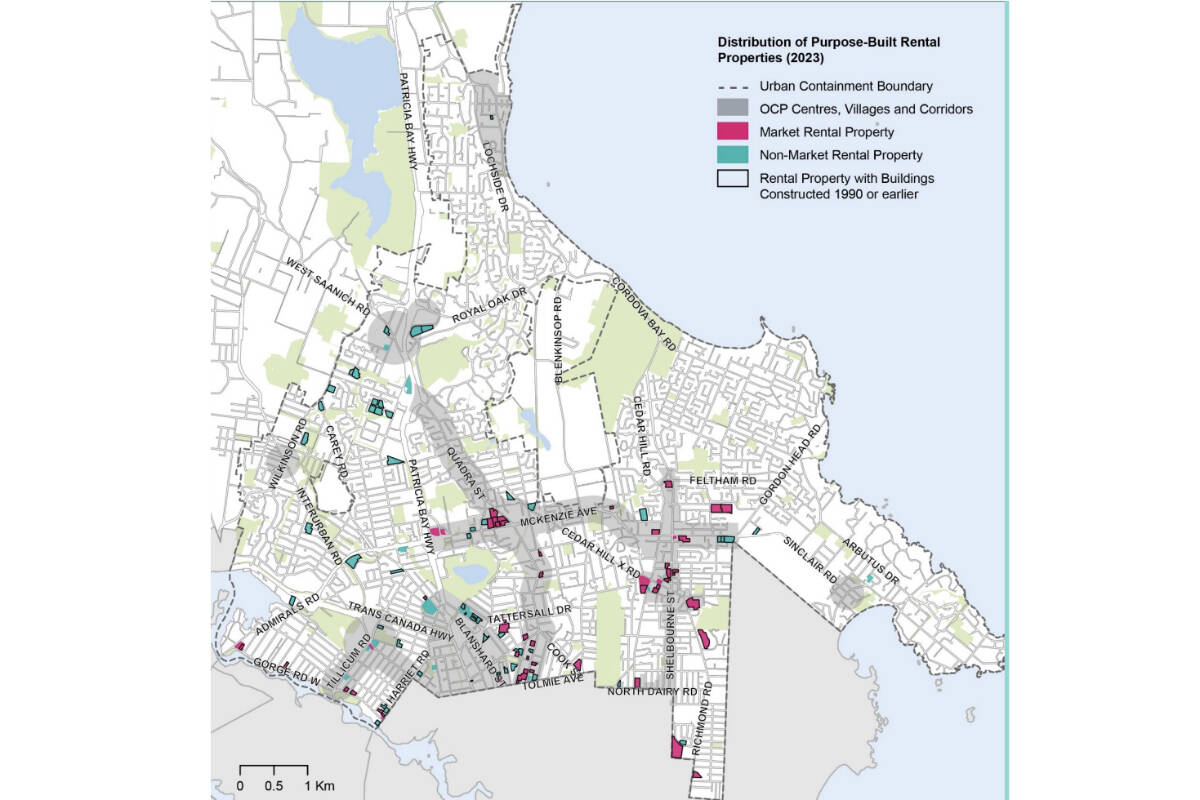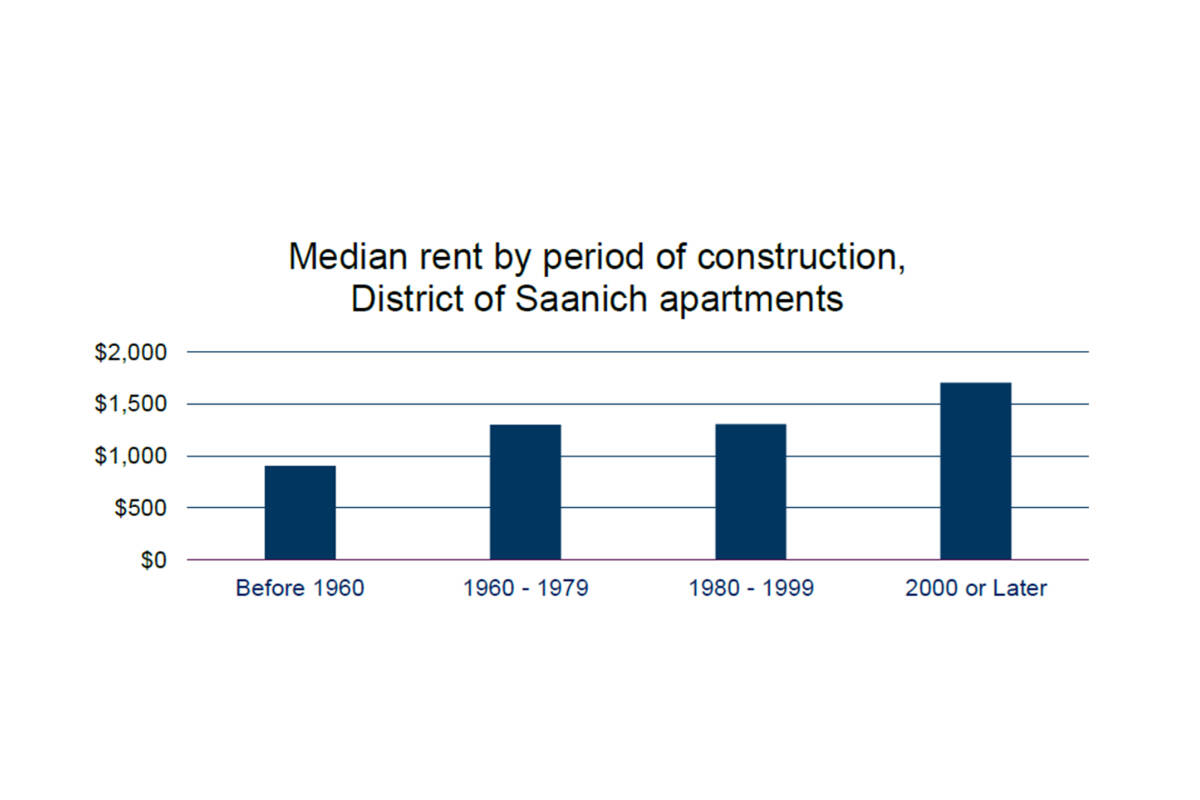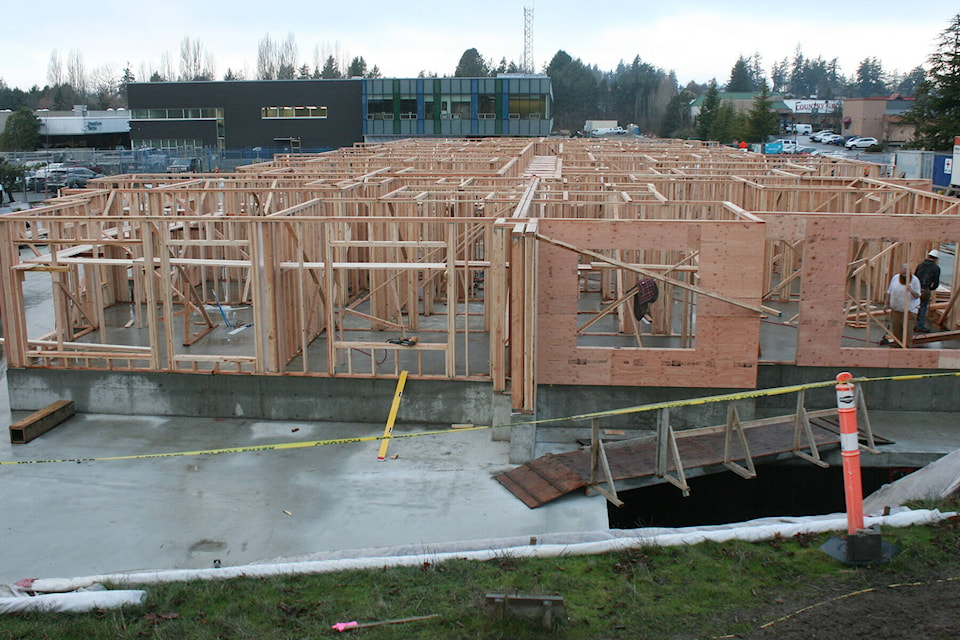Saanich council has adopted a policy designed to protect renters facing renovictions or displacement due to redevelopment.
The tenant assistance policy was unanimously adopted at a special council meeting May 1, and requires a rezoning applicant to provide support to renters living in the building in the event of renovations or rebuilds resulting in displacement.
Of the 31 per cent of Saanich residents who comprise the district’s rental market, about one-fifth reside in purpose-built units in almost 100 properties, according to the presentation given to council by Saanich housing policy analyst Amanda Blick McStravick.
As more than 80 per cent of those purpose-built units were constructed before 1990, the policy will go beyond what is required in the B.C. Residential Tenancy Act for providing support and assistance, as a considerable number of the buildings could soon require work, according to the data given in the presentation.

While these buildings may need renovations, retrofits and even rebuilds in some cases, they also represent the most affordable housing properties in the District of Saanich.
The impacts of displacement from more affordable housing to the current rental market could result in several hundred dollars difference for renters, something this policy strives to mitigate.
“A lot of housing in Saanich was largely built in the 1960s, ‘70s and ‘80s, and that means with the age of those buildings, they’re much more likely to be replaced with new builds,” Saanich Mayor Dean Murdock said. “It is important that we put a policy in place to ensure that people who are renting in that older housing stock are protected from eviction and potentially displacement from the community. We want to make sure Saanich is a place where everyone can find a home, regardless of income or stage of life.”
READ MORE: Saanich lands undesirable spot on national vacancy rate list

The policy lays out what Saanich building owners have to do in order to accommodate the needs of renters who are required to vacate a property. These requirements would be implemented if at least five tenant-occupied units have to be permanently vacated.
Of the requirements, the policy mandates a tenant assistance plan to be submitted along with a rezoning application, which establishes a tenant relocation coordinator and clearly identifies the project timeline and relocation process.
In terms of actions the rezoning applicant has to take to support tenants, they must provide relocation assistance for finding a new home, both in terms of the administrative work that comes with searching for and securing a new unit and moving expenses. The applicant must also offer the tenant right of first refusal when the project is complete, at a 20 per cent discount for comparable units (with income testing). Additionally, rent compensation to aid in the transition to the rental market and additional assistance must be provided, if needed.
The new policy comes into effect June 12, and rezoning applications received prior to this date do not have to comply with the requirements.
There will be a two-year review of the policy in 2025 to ensure it is meeting the needs of renters and applicants.
@HLFerguson
hollie.ferguson@vicnews.com
Like us on Facebook and follow us on Twitter.



